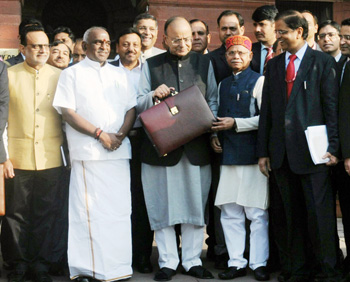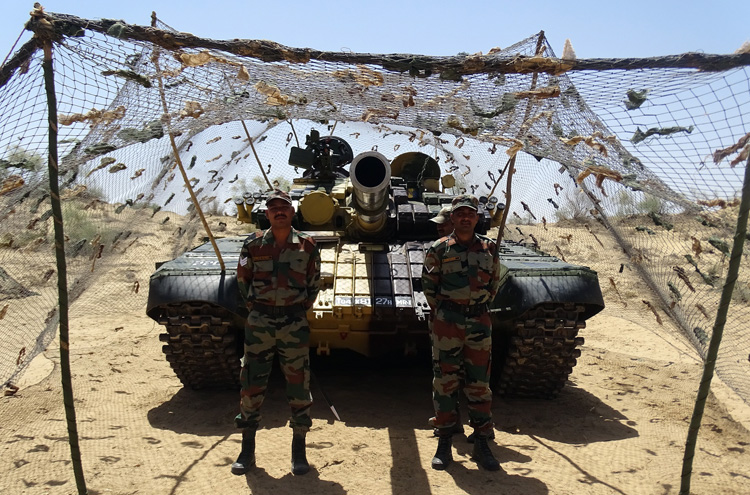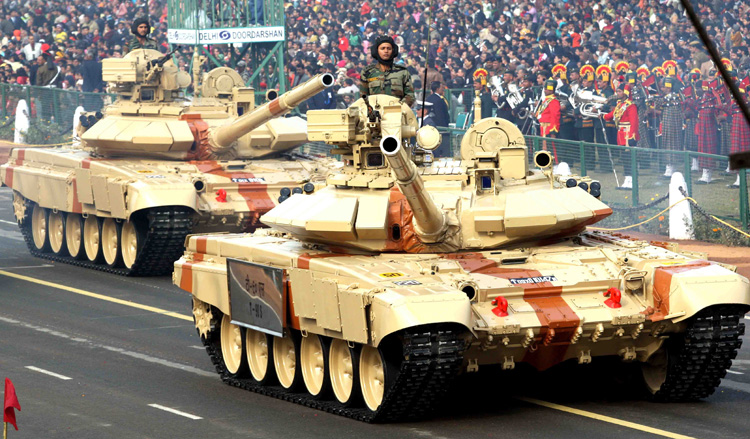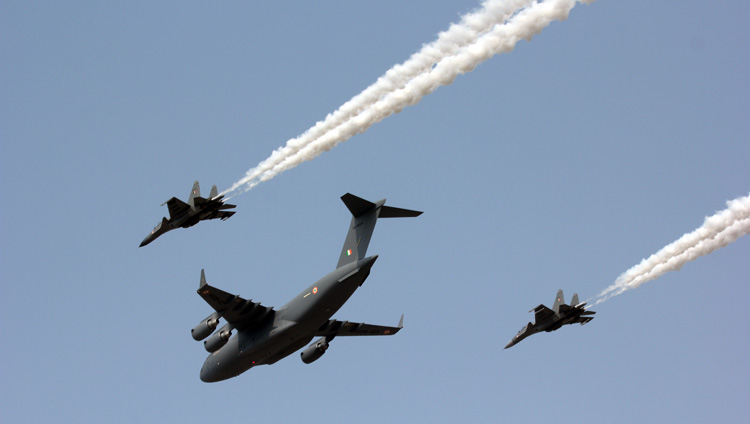INDIAN ARMED FORCES CHIEFS ON
OUR RELENTLESS AND FOCUSED PUBLISHING EFFORTS

SP Guide Publications puts forth a well compiled articulation of issues, pursuits and accomplishments of the Indian Army, over the years

I am confident that SP Guide Publications would continue to inform, inspire and influence.

My compliments to SP Guide Publications for informative and credible reportage on contemporary aerospace issues over the past six decades.
- Prime Minister witnesses 'Bharat Shakti' – a Tri-Services Firing and Manoeuvre Exercise in Pokhran, Rajasthan
- Interim Defence Budget 2024-25 — An Analysis
- Union Defence budget 2024
- Prime Minister Modi Commemorates Indian Navy Day in a Grand Ceremony
- Prime Minister Modi Flies in the LCA Tejas
- New Chapter in India-Italy Defence Ties
- Airpower beyond Boundaries
Defence sector to get a ‘Make in India’ makeover in Union Budget 2018-19
Aiming at modernising the forces, Finance Minister Arun Jaitley spoke about the defence sector in the fiscal budget today morning. Hiked by 7.81 per cent to 2,95,511 crore from the previous year’s 2,74,114 crore, according to analysts, the sum still remains insufficient to fulfil the plans of modernisation, especially local manufacturing of armaments.

Automated warfare
Jaitley did mention that the focus was on defence production and inviting investment in the sector. There are plans to develop two defence industrial production units and a separate corridor will be setup in 2018-19. The first one will be built starting at Tamil Nadu, linking Chennai and Bengaluru.
The fiscal budget also mentioned that the focus will be on industry-friendly defence production policy and modernization of the forces that seems to be in sync with the Make in India programme for developing the country into a defence manufacturing hub.
Despite a pat on the back from Jaitley, defence budget still remains lowest since 1962
While the move will serve to decrease the dependency on imports in the sector, it still remains to see if the plans move beyond the idea stage. For starters, India does hold the reputation of being the largest importer of defence equipment in the world and many experts argue that the new indigenous production approach may require the government to invest more than usual. The measly 7.81 per cent hike makes for only 1.58 per cent of the GDP, which is the lowest since 1962 and seems a tad unexpected in view of the heightened tensions with Pakistan and China. Faisal Ahmad, founder and CEO of a global market intelligence, research and advisory company BIS Research echoes the sentiments of many that the budget allocation may not be enough. He says, “A major portion of the allocated budget will go towards upgrading defence production capabilities, particularly on the northern borders with China, and towards enhancing maritime security in the Indian Ocean and the Andaman and Nicobar Islands. However, considering the growing need for the modernization of the Armed Forces, much more remains to be done, especially when it comes to the Navy and the Air Force.”

Keeping a close eye on the neighbours’ shenanigans on the borders via improving infrastructure has been given reasonable importance in the financial forecast for this year. Jaitley said, “To secure India's defence, we are developing connectivity infrastructure in border areas. Rohtang tunnel has been completed to provide all-weather connectivity to Ladakh. Contract for construction of Zozila Pass tunnel of more than 14 kilometer is progressing well. I now propose to take up construction of tunnel under Sela Pass (in Arunachal Pradesh).”
Payback time
On the other hand, the allocation for defence pensions was 1,08,853 crore, which is 14.26 per cent higher than the revised estimates of last year at 95,000 crore, making it the first time the pension amount has crossed the lakh crore mark. The hiked pension sum, which is over and above the defence budget, makes it the first time that the country will spend more on pensions than it will on capital expenditure. However, many analysts argue that though the defence pension budget looks huge, the per person pension amount in civil services is about 3-4 times in comparison.

Experts weigh in
Industry-insiders are on the fence with the financial estimates for 2018-19. Pierre de Bausset, president and managing director, Airbus India says, “The budget has sought to strike a balance between India’s need for economic growth and the wellbeing of its citizens. The government has also announced measures to push its ‘Make in India’ programme, including plans for two Defence Industrial Corridors and a new industry - friendly Defence Production Policy in 2018. We hope such steps will foster a sustainable eco-system that promotes investment and helps expedite the modernisation of the armed forces in a constantly evolving strategic environment.” In fact, defence minister Nirmala Sitharaman termed the fiscal defence budget ‘reasoned out’ stressing on the 7.9 per cent increase on the Budgetary Estimates (BE) of last year.

Meanwhile, others are apprehensive about whether the latest budget will aid the modernisation of the armed forces. “With nearly 7,500 kilometres of the Indian border open to sea and vulnerable to breaches, there is a need for constant maritime surveillance to protect these areas. This makes it imperative for India to invest in technologies like unmanned underwater vehicles (UUVs). It is expected that the market size for UUVs in India will reach $159.33 million by the year 2021. In addition to the Navy, UUVs in India can also be used for various other applications like scientific research and offshore gas exploration. Prominent national level institutions and research organizations like Defence Research and Development Organization (DRDO) and National Institute of Ocean Technology (NIOT) are already incorporating UUVs for surveying and mapping applications,” says Ahmed.
“Given the shortage of weapons and systems such as combat aircrafts, naval ships, and artillery ordnance, there is an urgent requirement for procuring firearms, ammunition, submarines, single-engine fighter aircrafts, and helicopters.






